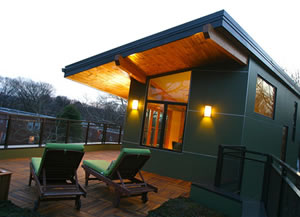- 3 reads

There is no doubt that economic downturns are tough, however it does afford homeowner's the opportunity to decide what is really important to them. Energy bills are skyrocketing as more and more Americans are without work, forcing some homeowners to make a decision about what household purchases should be made now, and what should be put off for a less monsoon-like day.
Before the housing bubble burst like a watermelon at a Gallagher performance, many American's priorities rested in fun gadgets, TVs and vehicles, without much concern for energy bills and the efficiency of their home. Though now that the belt has been cinched a few more notches, many have started to look inward for the answers to their mounting problems and debt.
This is the perfect time to make a long term investment in your home. With some small adjustments and the right decisions, by the time America exits the recession, you and your home will be off and running.
New Appliances
Springing for a new appliance like a refrigerator when your old one still works is counterproductive, but if you are currently in the market for a new Clothes Washer or Dryer, or Refrigerator, make sure the product is Energy Star® certified. These appliances might cost a little extra up front, but will go a long way towards saving you money on your energy bills each and every month. Cheaper appliances might seem appealing, as there is less of a sticker shock, however you will be paying for that decision for a long time as the operating costs, such as natural gas or electricity, do not look like they will decrease.
For furnaces, it is important to look for high Annual Fuel Utilization Efficiency (AFUE) ratings, which will let you know how efficiently your product is functioning. The national minimum is 78% AFUE, but with an Energy Star® model it is possible o get that number over 90% AFUE.
For Air Conditioners, the number you should be looking at is the Seasonal Energy Efficiency Ratio (SEER). The current minimum is 13 SEER, but higher numbers mean more efficient, and Energy Star® models can bring you over 14 SEER and even higher.
Windows
Energy Star® doesn't only certify appliances. They also offer products that will help reduce heat loss through the windows in your home. It is important to consider investing in commercially installed storm windows or insulated glass.
Windows are the places in homes that lose the most heat throughout the day, as the insulation value of a window, measured as the R-Value, is 1. Building codes mandate that walls have a minimum R-Value of R-19, which, in terms of your energy bill, means that windows might just as well not be there at all. You can increase the resiliency of your windows by upgrading to Energy Star® models, which only cost about $0.50/sq. ft. more than standard windows, but increase energy savings and comfort.
Other ways to increase the R-Value of your windows is to get double paned glass with an argon gas fill in between. The two panes and gas increase your R-Value from 1 to about 3.2. But going even further would include adding blinds, drapes or other coverings that are quilted and account for another R-3, almost doubling the original value.
Insulation
Your home is most likely not properly insulated. It probably meets the building codes-mandated minimum amounts; however the minimum is definitely not the answer.
Heat rises, so the most important place in your home to add insulation is the attic. If you are not already at this level, increase your attic insulation to R-38, which is the current requirement for new homes. It is also vital to consider attic stairs when insulating your attic. Without dealing with that space, heat is free to escape right out of your home. An easy, low-cost solution to this problem is to add an insulated attic stair cover. An attic stair cover seals the stairs, stopping drafts and energy loss.
Furthermore, it is important that the whole house is insulated properly. That means insulating and sealing ducts in the attic, crawl spaces, garages and other unheated areas that potentially offer big energy savings. You should definitely consider insulating floors over unheated spaces to about R-19.
Lastly, you can fill in the space between your walls with more insulation to make your home that much more cozy. It should be added especially when the wall cavity is made accessible during home remodeling. It depends on your siding type, however blown insulation, applied from the exterior is a very safe way to go.
GREENandSAVE.com is a free resource for anyone that wants to save energy, money, and the environment. The articles, product reviews, online tools, and return on investment calculations are researched from a diverse range of public and private sector sources. Overall, the company is passionate about saving money as well as creating healthy homes, offices, and lifestyles.
To find a contractor to help with the insulation, take a look at GREENandSAVE.com's Contractor Directory. And to make sure you're doing everything you can to stay warm and efficient this winter, check out GREENandSAVE.com's Return on Investment Table for great tips and suggestions for your next Home Remodeling Project. The information there will help you to prioritize your home projects in order to do what needs to be done without breaking the bank.
The tips in this article were gleamed from the Washington State University Energy Program, and the United States Department of Energy.

